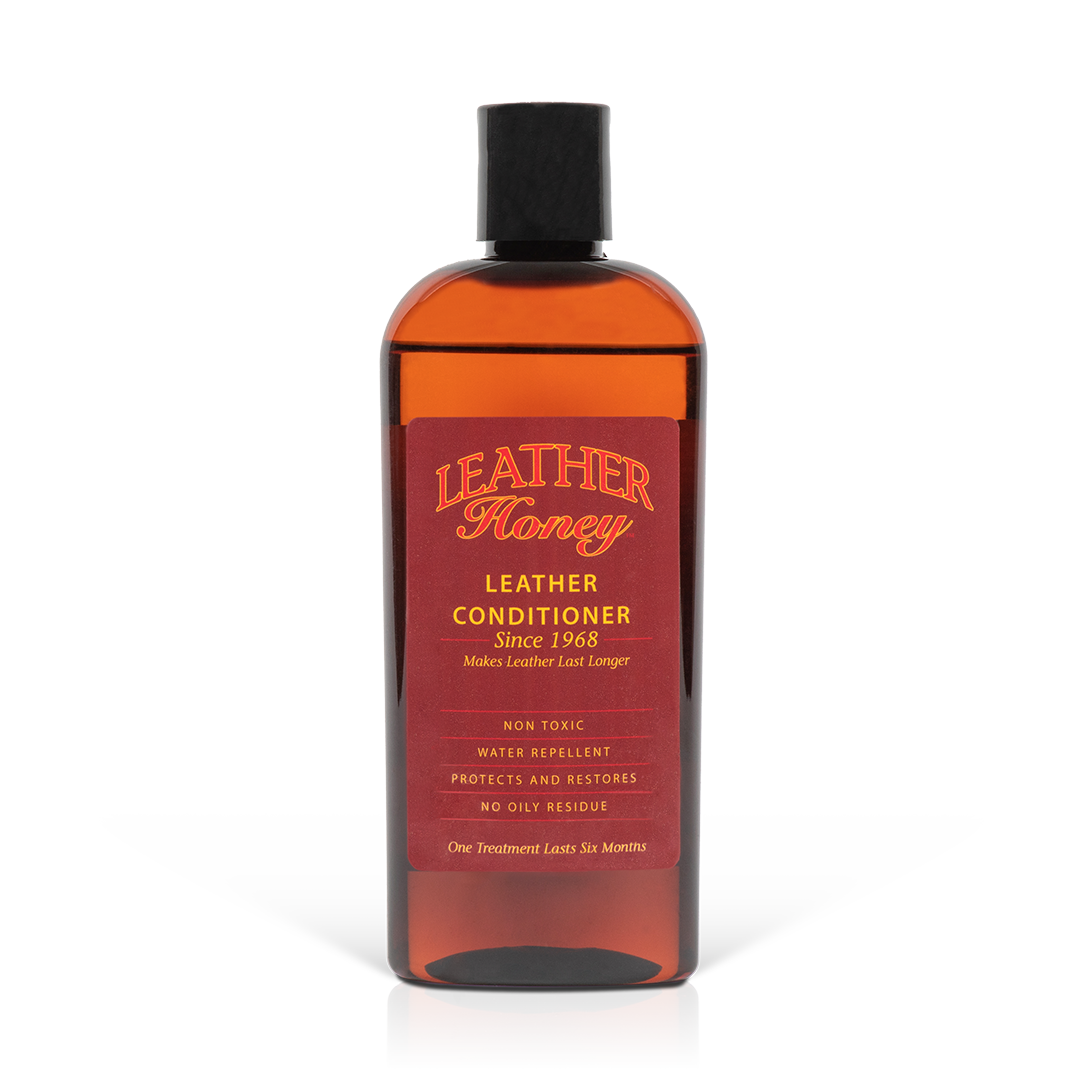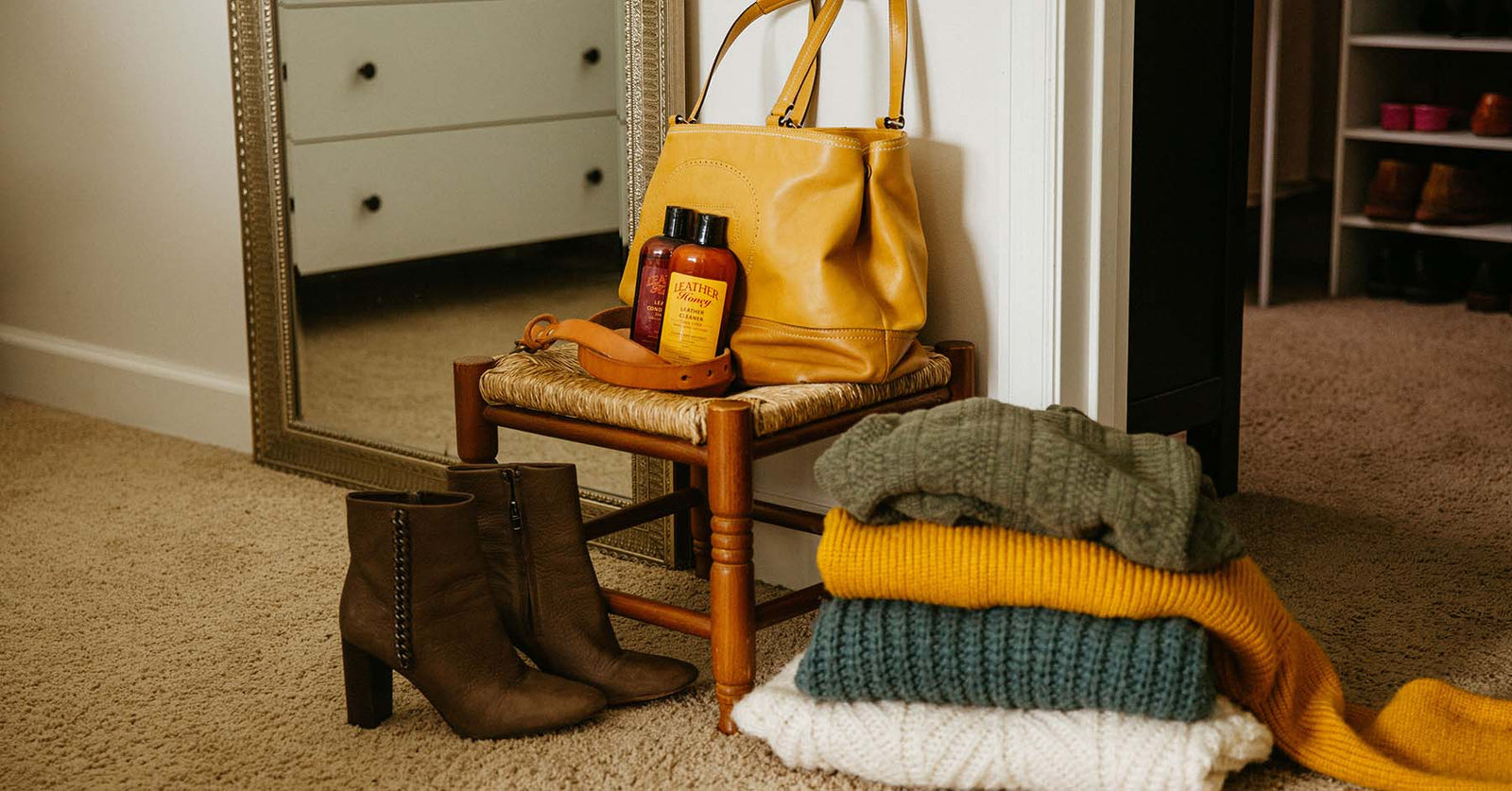Some things get better with age, and leather is one of them: Over time, leather develops a beautiful patina that adds to the material’s rich, textured look. Many people purchase leather with this look in mind and want to know how to speed up the aging process and give their leather a patina right from the start.
What is leather patina?
A patina is a change in the character and appearance of the leather over time, which often adds a warm, lived-in look. Patinas can occur on a number of materials in addition to leather, including copper, bronze, and wood. A patina is an indication of quality, as only quality,genuine leather will patina over time.
Simply put, a leather patina adds character to your leather items, and many leather owners embrace the aging process for this reason. Manufacturers sometimes try to mimic the appearance of a leather patina by distressing new leather, and intentionally aging it. You can’t manufacture the effects of time, but you can get pretty close to a natural patina with some tricks.
How to age leather
The best way to age leather and fast forward the patina process is to use your leather items regularly and care for them well.

First of all, be sure you’re purchasing the right leather. Faux or bonded leather will not patina with time; it will only crack or peel, which is not the look you’re going for. High-quality leather will patina and age with character, which is what you want. You also want to look for uncoated leather, as a coating is designed to protect the leather from aging.
With use, the right leather will patina on its own as it is naturally exposed to the elements — things like body oils and sunlight naturally add patina to your leather, as does regular wear and tear. When you carry your favorite leather bag, wear your leather jacket, and sit on your leather chair, you’ll be contributing to developing a patina without even knowing it.
If you want to speed up the process, though, you can use aleather conditioner like Leather Honey Leather Conditioner that does not add a shine or synthetic coating to the leather. Leather Honey softens your leather and makes it more flexible, breaking down the stiffness of new leather and hydrating the individual fibers. This will allow your leather to bend and mold with use, which will help create a patina. At the same time, Leather Honey also protects your leather from less desirable signs of aging, like cracks, scratches, and significant fading.
Purchasing distressed leather
As noted above, you can also purchase leather that has been distressed by the manufacturer, mimicking the look of patina. High-quality distressed leather will continue to patina over time. To ensure the leather is high-quality, aim to find top-grain, full-grain, or aniline leather, and inspect the leather carefully to make sure the distressing look organic and natural. In some cases, you can also ask the manufacturer about the methods used to distress the leather.
Full-grain leather, which is often the most expensive kind of leather, does not have the top layer of the leather removed, which means natural inconsistencies in the leather are already present that can contribute to a worn, lived-in patina. For example, there may be scar marks, slight variations in the color or texture, or even pores visible on the leather, and many leather lovers embrace these, as they’re a sign of the natural origins of the leather.
Caring for patina or distressed leather
You can care for leather that has developed a patina or distressing the same way you’d care for all real leather — by cleaning regularly as needed, and conditioning the leather every six months. High-quality products like Leather Honey will not remove the patina, but we do recommend spot testing in a discreet area first — particularly for leather that has been distressed by the manufacturer, you want to ensure that conditioning won’t reverse any of the faux distressing. In most cases, leather that has naturally patinated or distressed over time will only be made better by conditioning.
More to Know About How to Age Leather
Some common questions people have about leather patina and how to age leather.
How can I patina leather faster?
The fastest way to patina leather is by using it often and keeping it conditioned. Heavy use will create a patina and the conditioner will make it more pliable, which helps with the patina.
Can you age leather quickly?
You can age leather quickly by using it and keeping it hydrated with a leather conditioner.
How can I age leather naturally?
You can age leather naturally simply by using it often. Just remember to clean and condition it often.
You May Also Like:
Top-Grain vs. Full-Grain Leather: What’s the Difference?
Bonded vs. Faux Leather: What’s the Difference?







